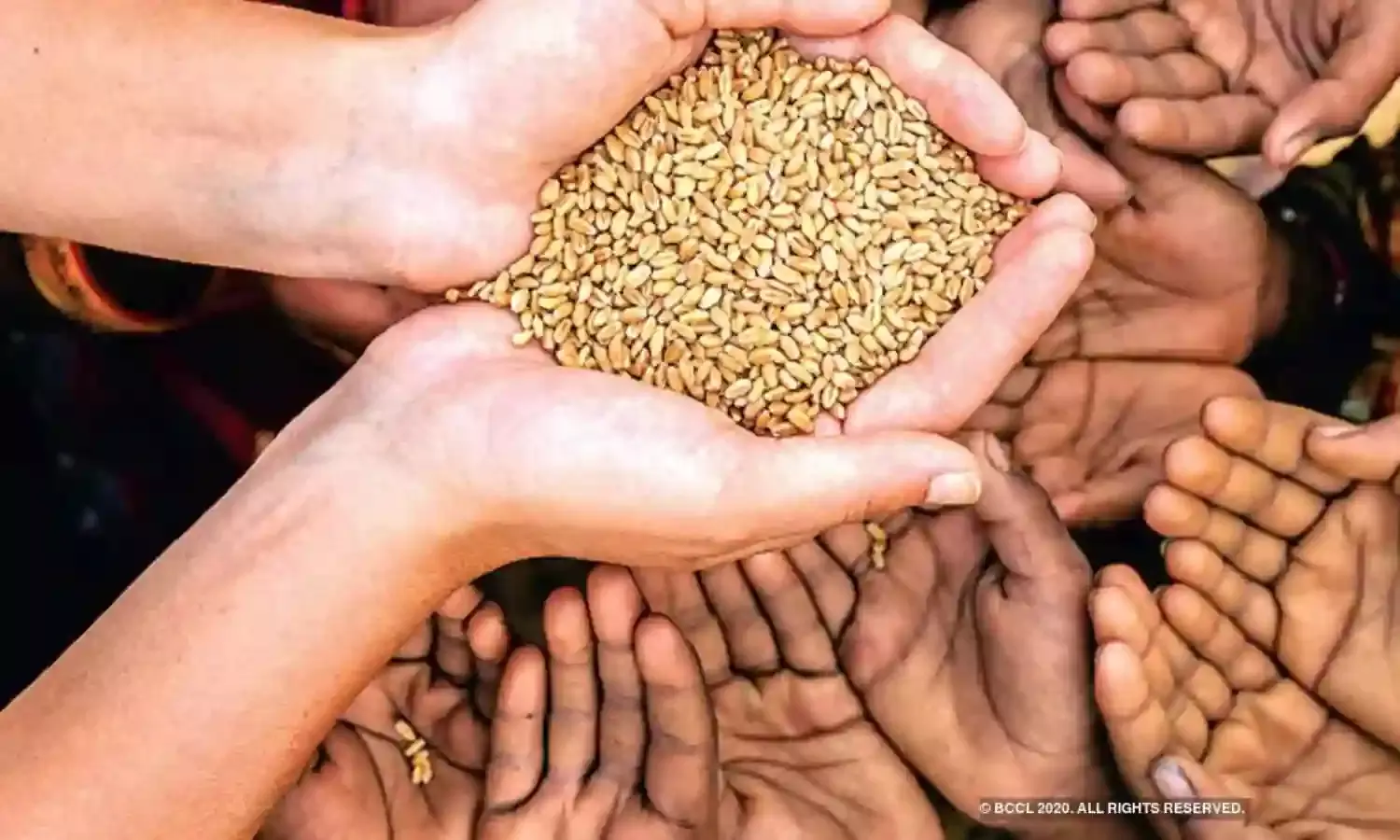Food Security In Troubled Times
The global food system’s stability is under threat;

The world is demanding more food each day. This is principally due to the demands of a growing population but also because people by and large are getting wealthier and want more and better food.
Coinciding with this growing demand for food is the phenomenon of climate change which has already begun to threaten food output and reduce the amount of food available. These two simultaneous developments are threatening the stability of the global food system.
On the one hand climate turbulence , chiefly floods and droughts slash away the expected harvests of major staple foods like rice, wheat and corn so that there is less available. On the other hand, a ‘getting wealthier’ class of people in both developing and developed countries is wanting and able to eat better, especially meat and other animal products like butter, ghee, cream, cheese etc.
All this is putting a lot of pressure on the land, leading to more and more intensive farming practices, using chemicals to extract the maximum out of plants and animals. So you have an overdosing of the land with chemical fertilisers to put in chemical nutrients rather than allow natural organic nutrients to build up in the soil.
Along with this comes the excessive use of toxic chemical pesticides to kill the pests that follow intensive chemical farming because their natural predators that keep them in check are dead.
As our own experience with the South-west Monsoon shows us, the weather is getting increasingly uncertain. There are floods and droughts in unexpected locations, at unexpected times. Climate shocks, particularly droughts which are becoming more frequent now and occurring in unlikely locations, have caused the most upheavals in global food supplies.
The American Midwest is the world’s greatest producer of maize and soybean. The drought of 1988/89 swept through the maize-soya belt of the US. This resulted in a loss of 12% of global maize supply, which meant maize eating food importing countries had lesser maize to import at higher prices.
The widespread drought of 2002/03, hit wheat production in Russia, Europe, India and China, resulting in a 6% reduction in global wheat supply. At the same time, the 2002/03 drought hit rice production in India , causing a decline of 4% in rice output. When there is a shortfall in global food stocks, the biggest casualties are food importing countries that are dependent on imported food.
India, and other Monsoon dependent countries, are particularly vulnerable to climate turbulence because a disturbance in the rainfall timing and pattern and the total amount of water received during the Monsoon period is a significant factor in India’s food self-sufficiency.
The health of the Monsoon essentially determines the amount of rice, India’s major staple food, that will be produced. India’s Monsoon period has been on average 100 days long. This is the period during which the country receives almost all the water it will get from rainfall.
The Monsoon period is already reduced by about 15 days so in effect the total amount of water we are getting has also gone down by some 15 %. This is having serious implications already and the situation is likely to worsen in the coming years.
So how do we cope with the impacts of climate change and secure our food supply ? Well first, we need to get off the uniform, monoculture, chemical treadmill because that kind of chemical based intensive food production is the most vulnerable to climate shock. It also produces unhealthy food, contributes to worsening climate change and pretty much wrecks up the environment.
There are some important changes we need to make but let’s start with a few. We need to get out our genetic diversity of crop plants and deploy it.
If you have many varieties of rice in the field or of wheat or potato, or maize or whatever, then you are quite safe. If some varieties get destroyed because of unseasonal weather, others will survive, so you may have less food but you will have food.
If you plant only that one high yielding variety backed up by chemical fertilisers and pesticides and that one variety falls to climate turbulence, then you have no food. So diversity is smart.
Invest in millets, instead of just rice and wheat as staple foods in your kitchen. These little grains are nutrition bombs and can take on the worst of climate change. The ‘big’ millets are Sorghum (jowar) and Pearl millet (bajra). The ‘small’ millets are:
- Finger millet (ragi) High in calcium, and makes rotis and snacks
- Barnyard millet. Called ‘sawa’ in Hindi. Once a staple, it’s now eaten during fasts and is rich in iron
- Foxtail millet. Can be cooked like rice and made into upma
Then there are the fibre and mineral rich millets:
- Kodo millet
- Little millet (kutki in Hindi)
- Proso millet (cheena in Hindi)
All of these are now quite easily available in the market and can be cooked in different ways for tasty, nutritious meals. So start making some changes in the food you bring home
Dr Suman Sahai is a scientist and founder chairperson of the Gene Campaign, a research and advocacy organisation working on food and nutrition. Views expressed are the writer’s own.

